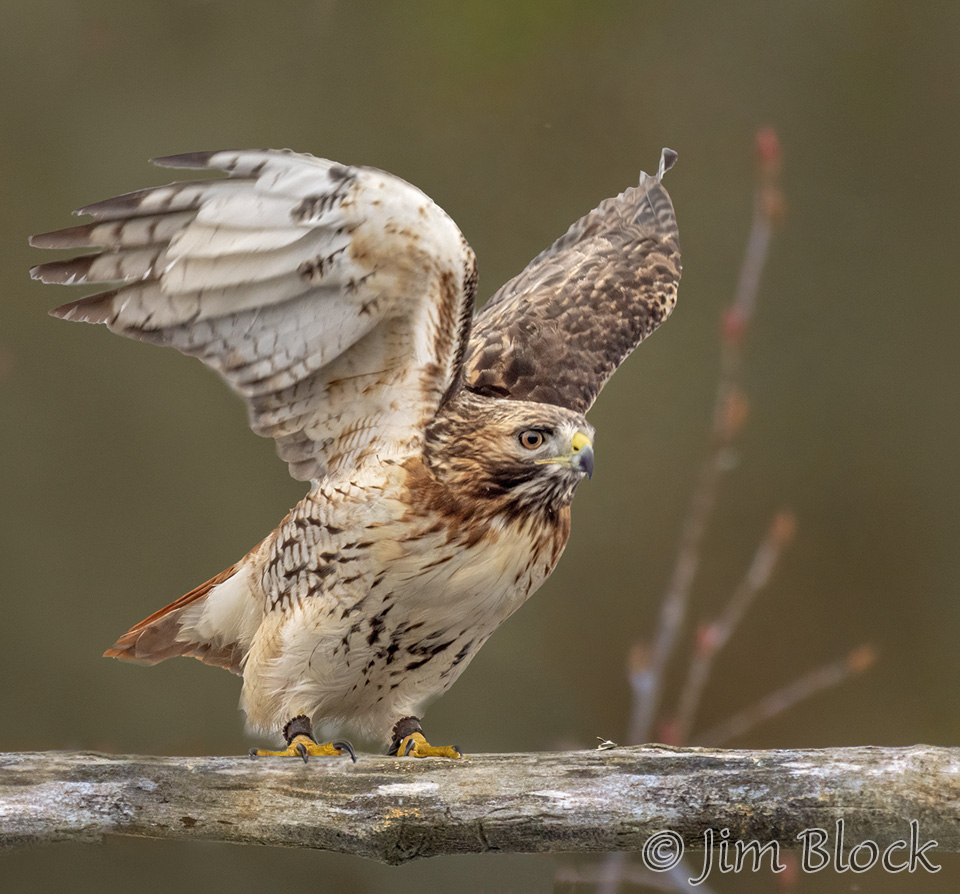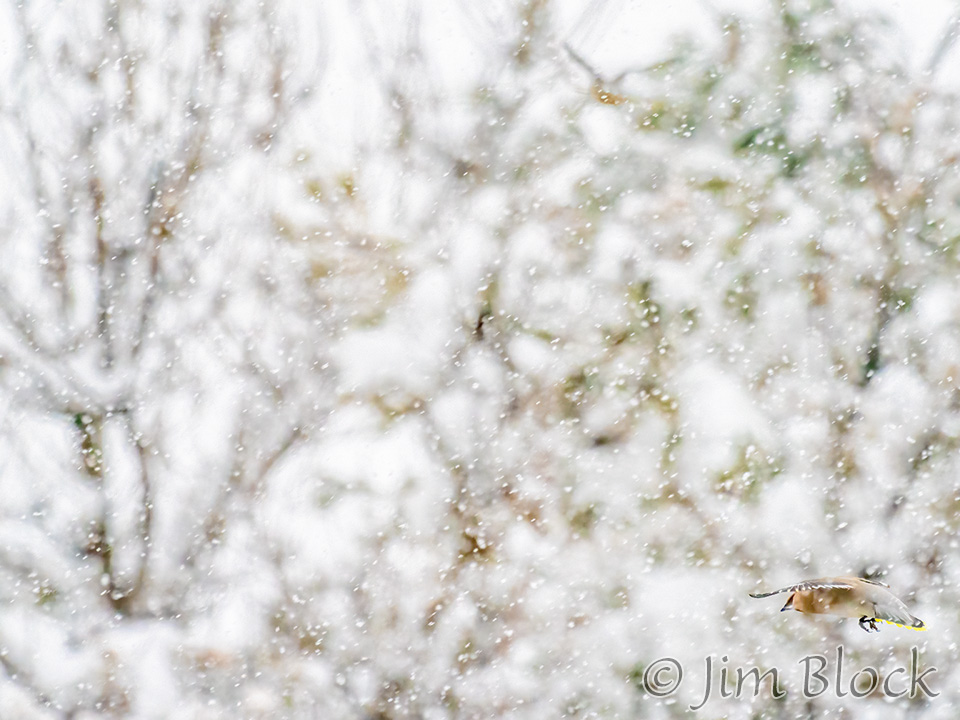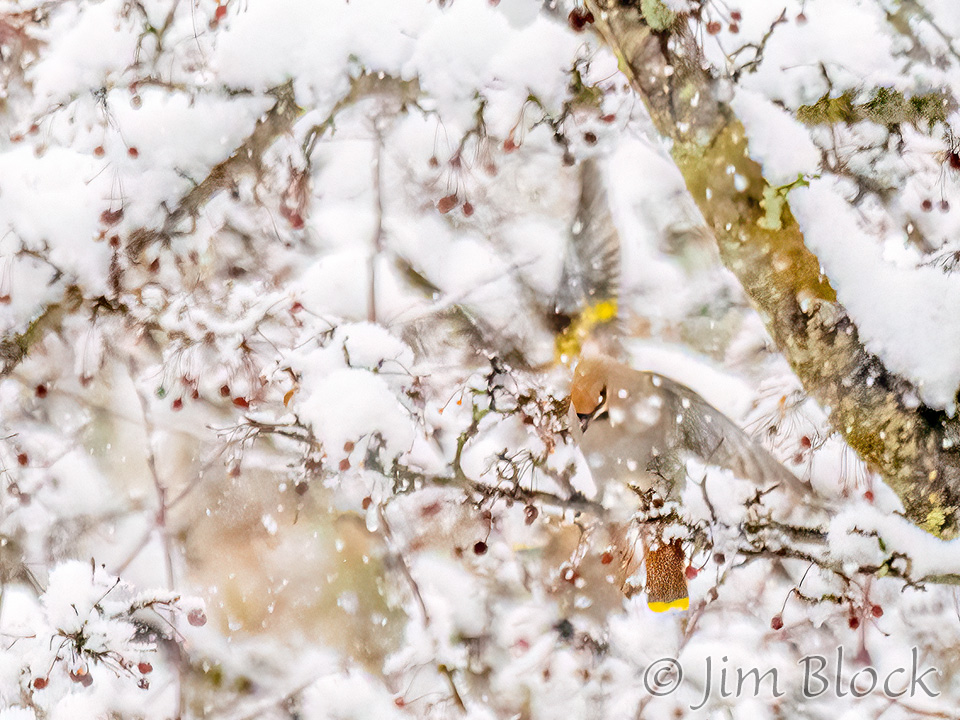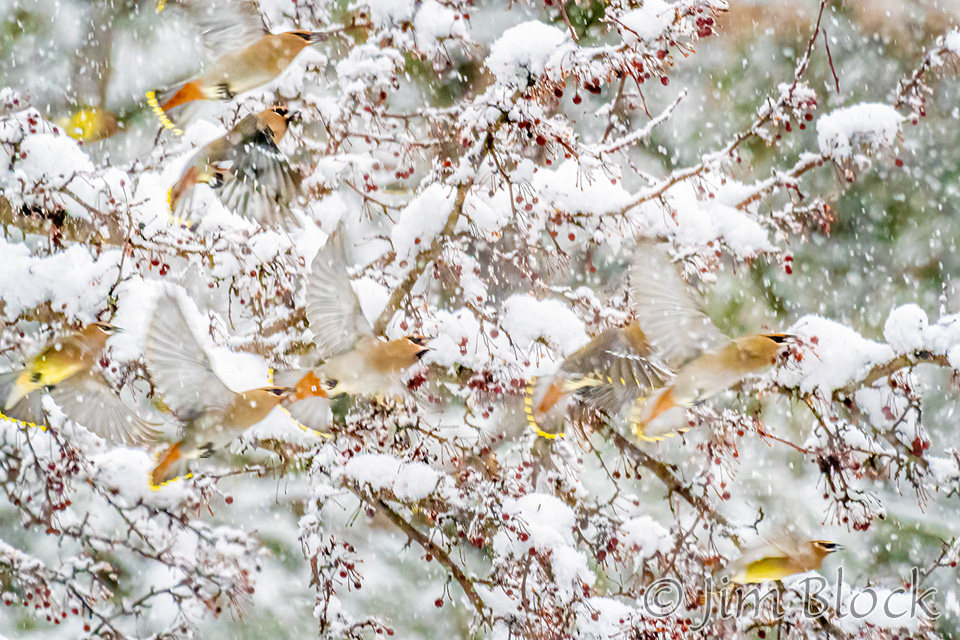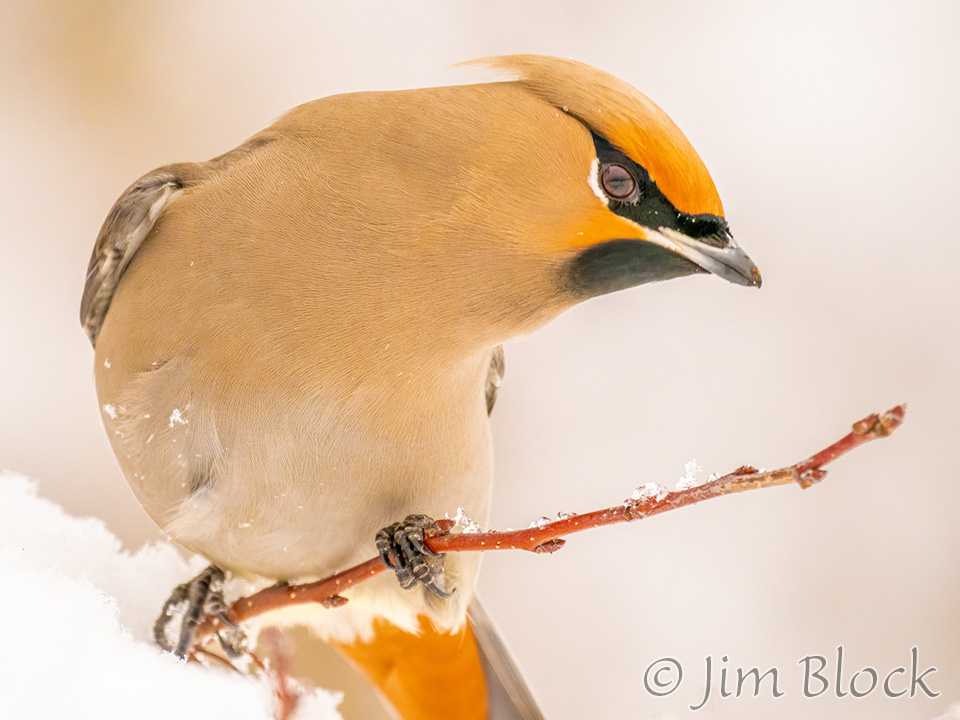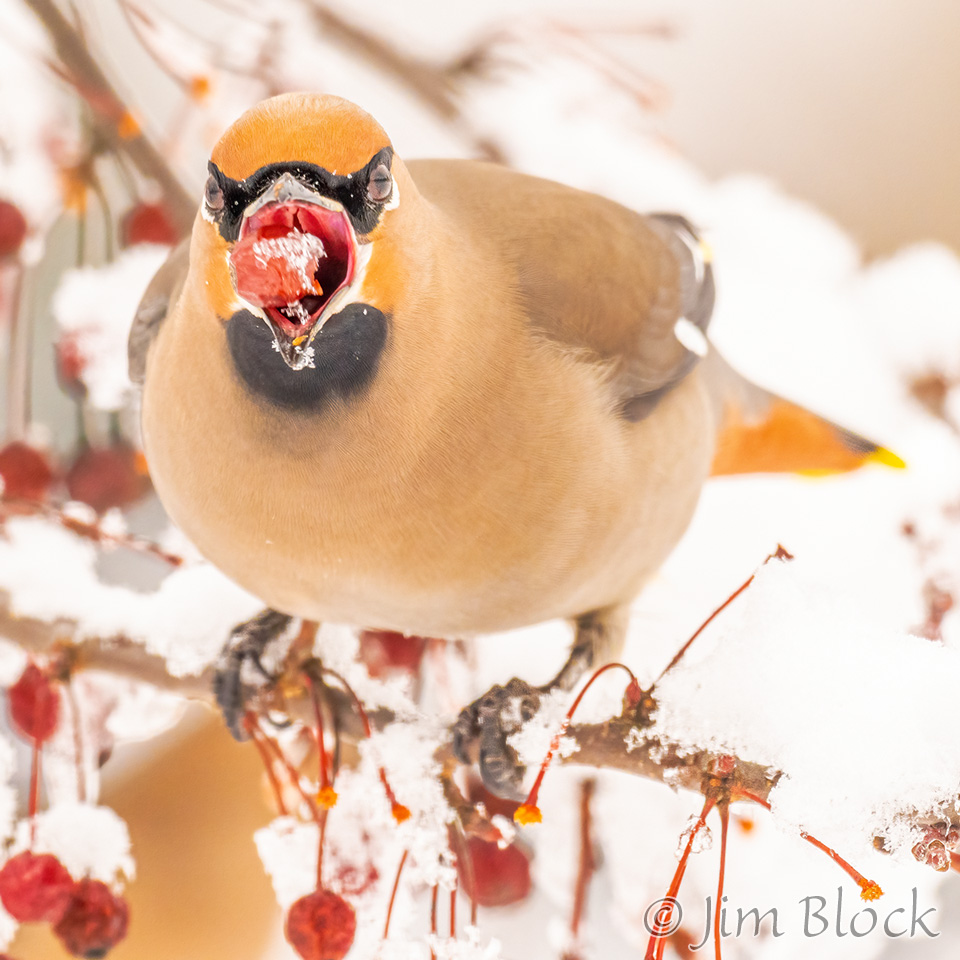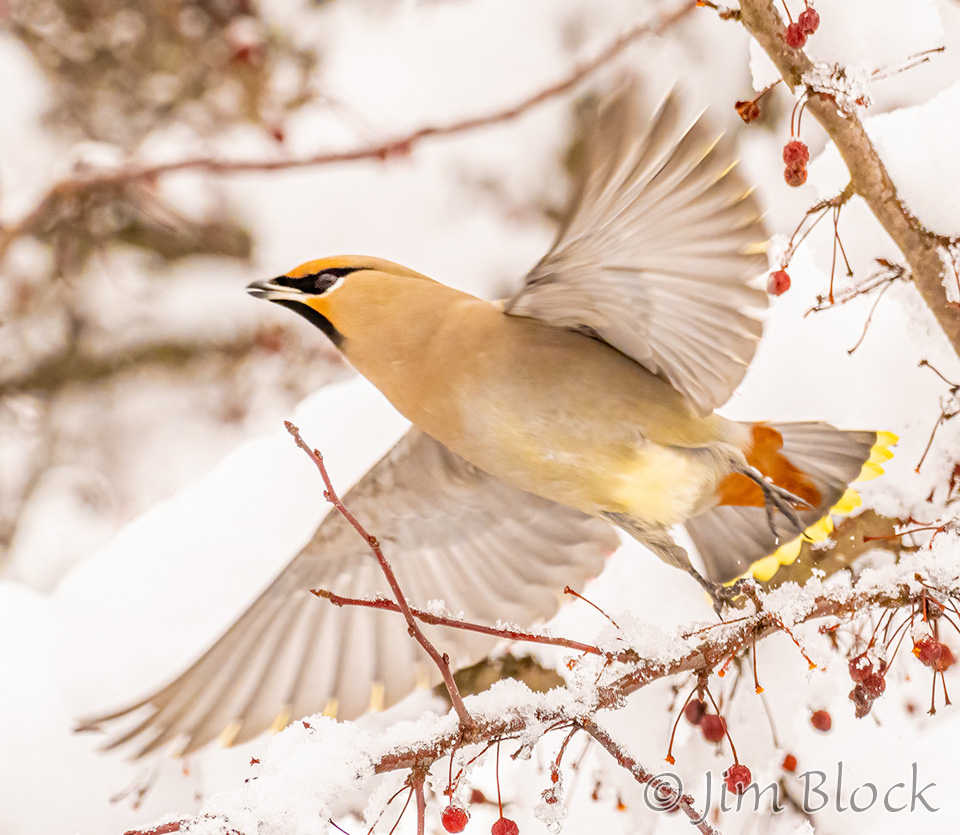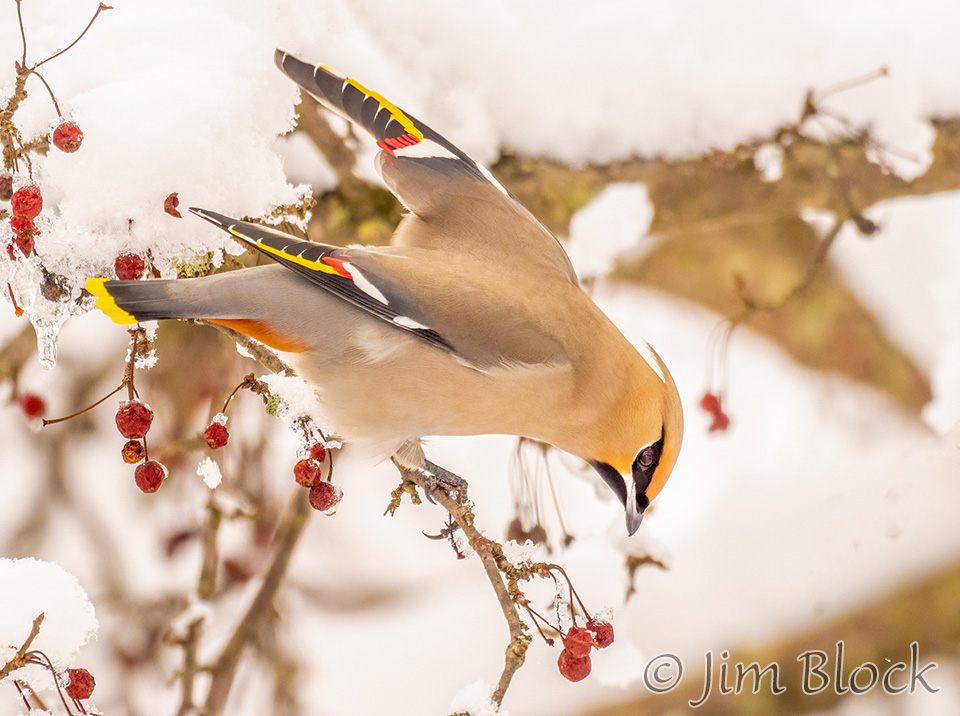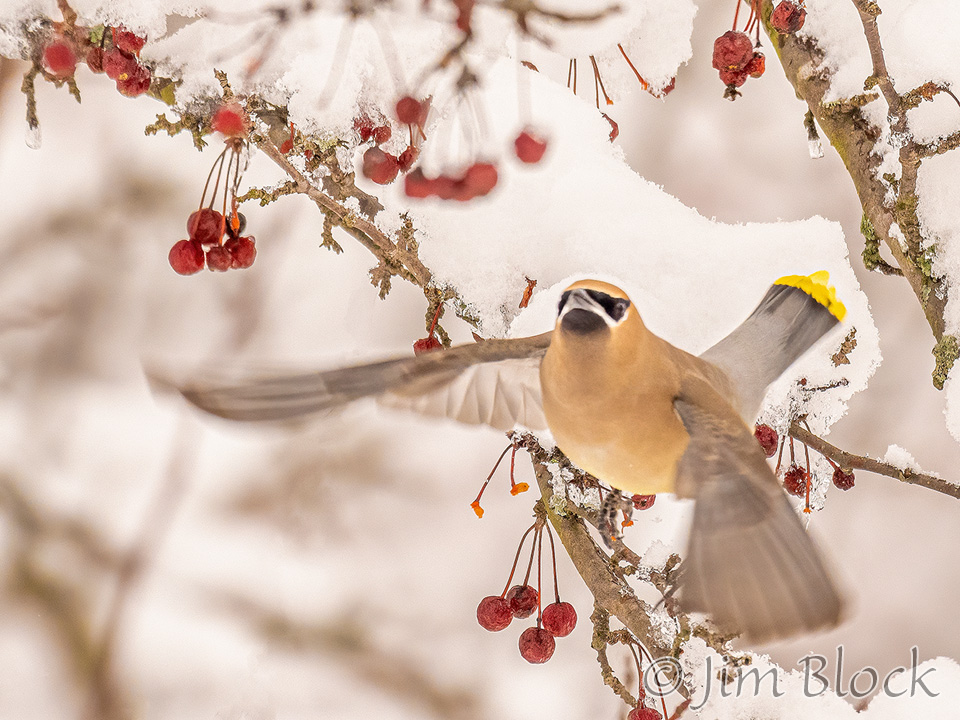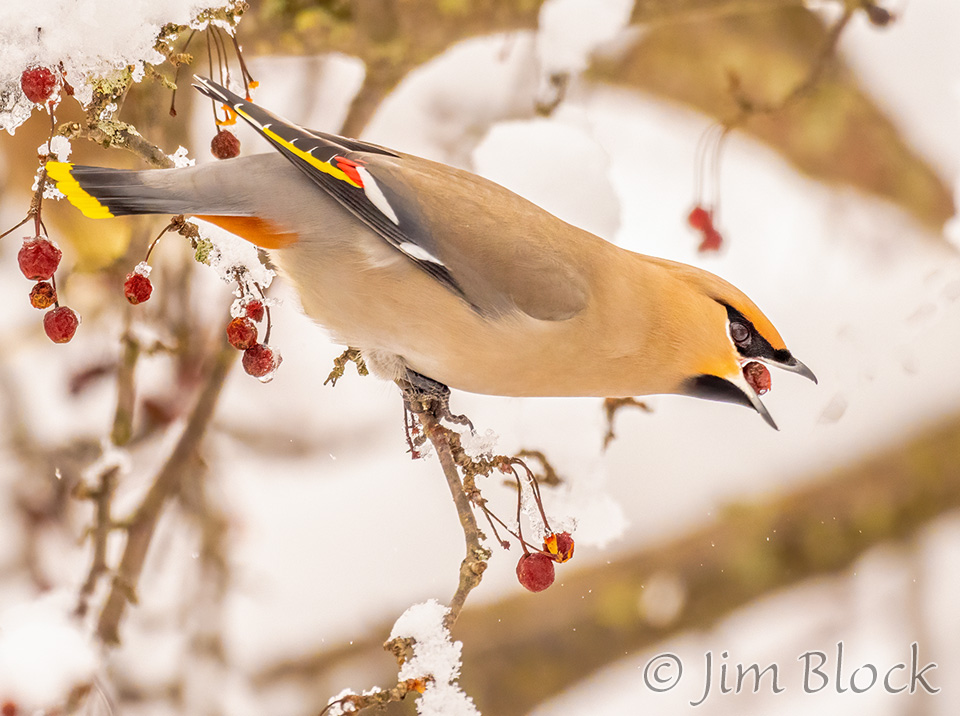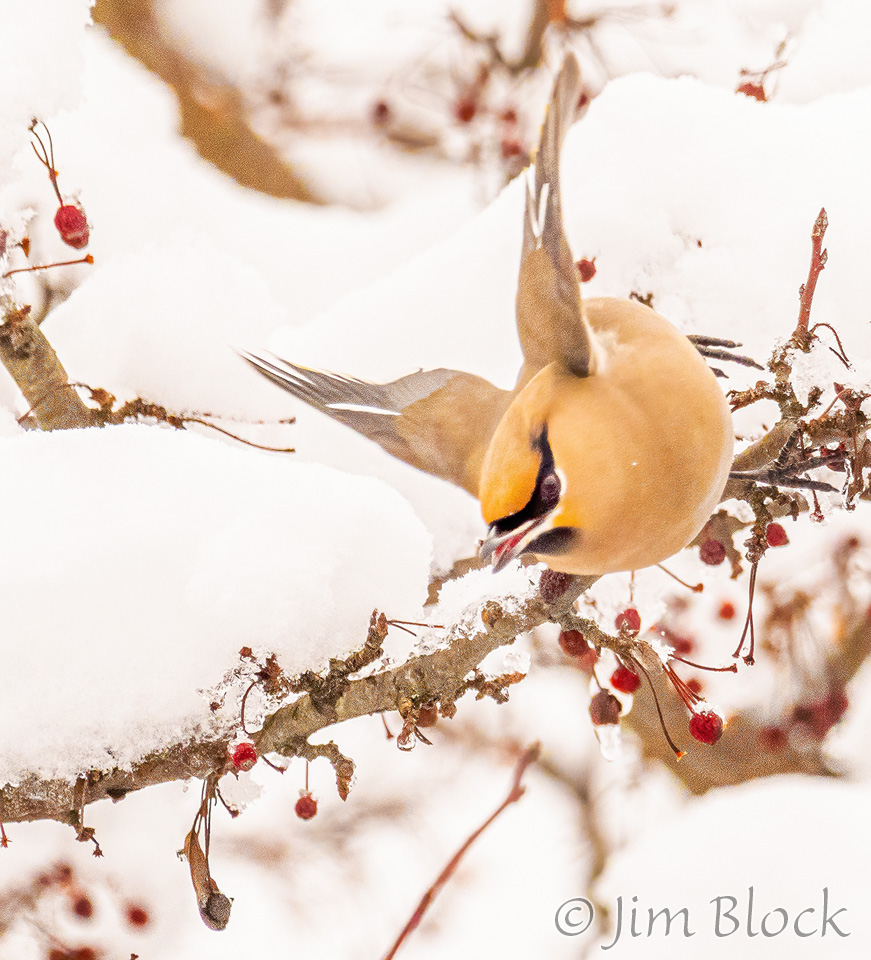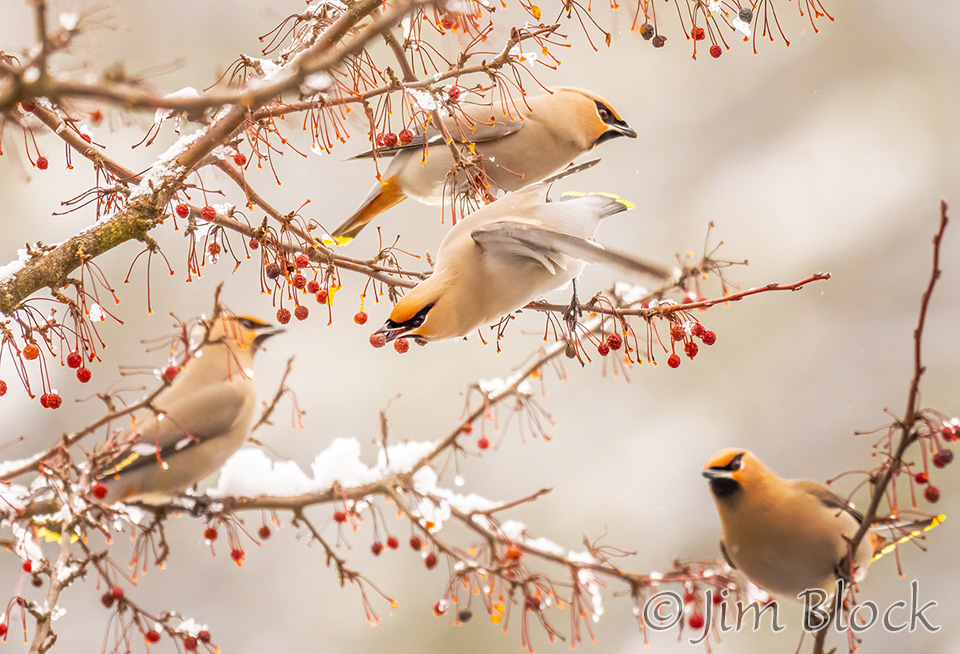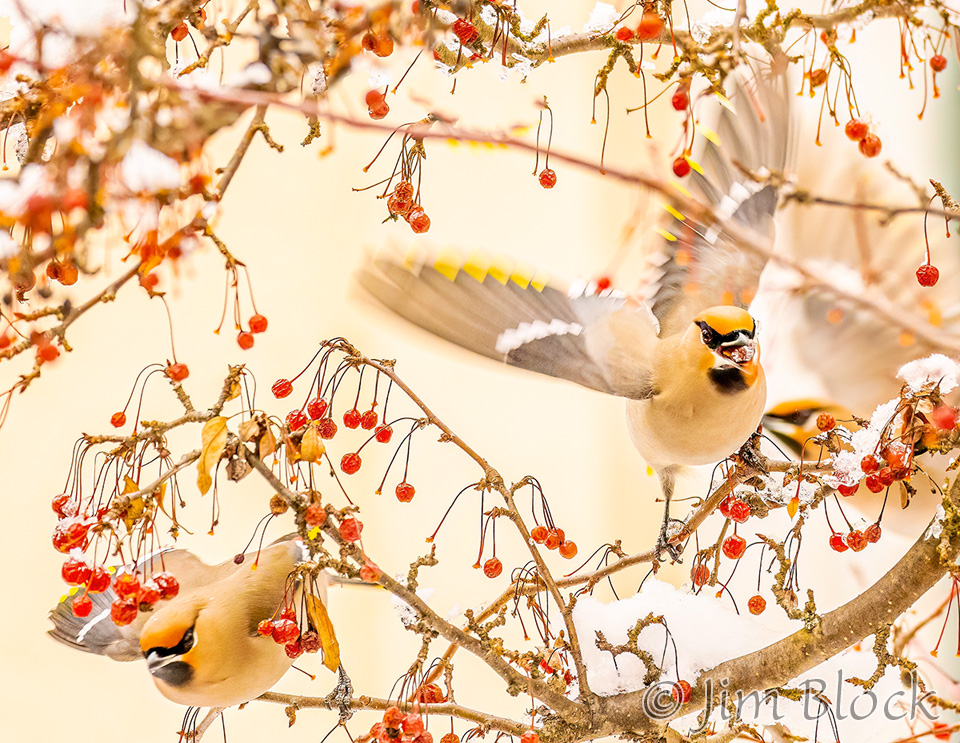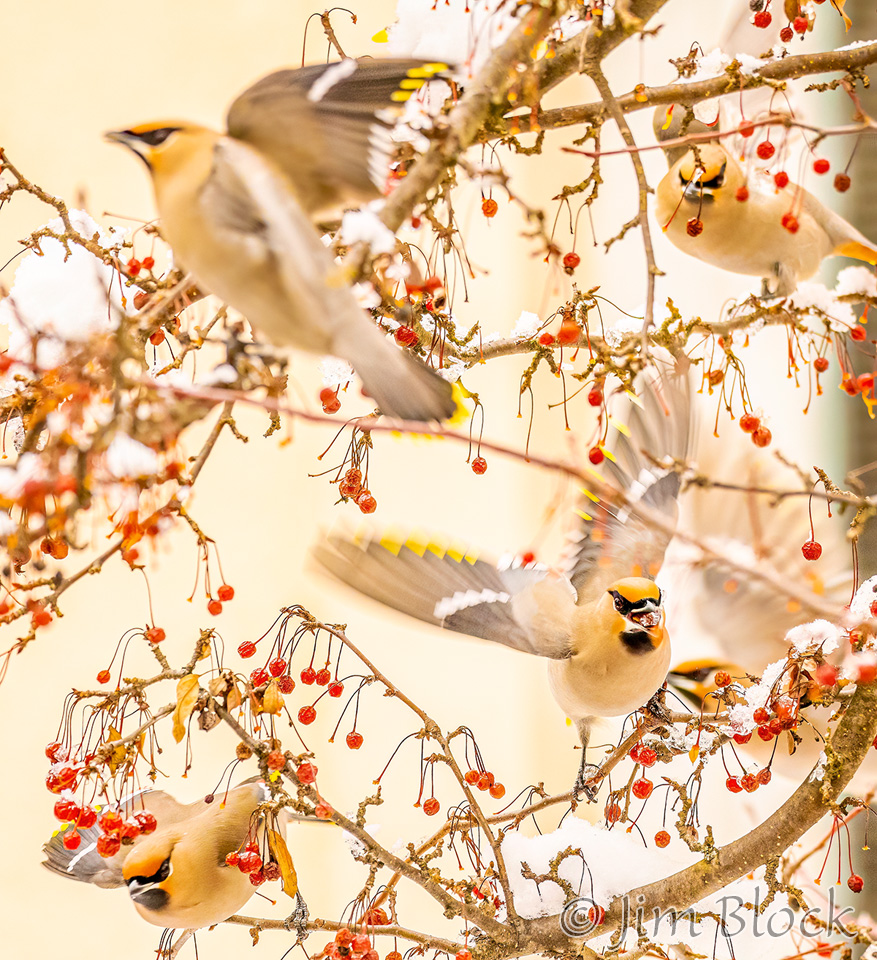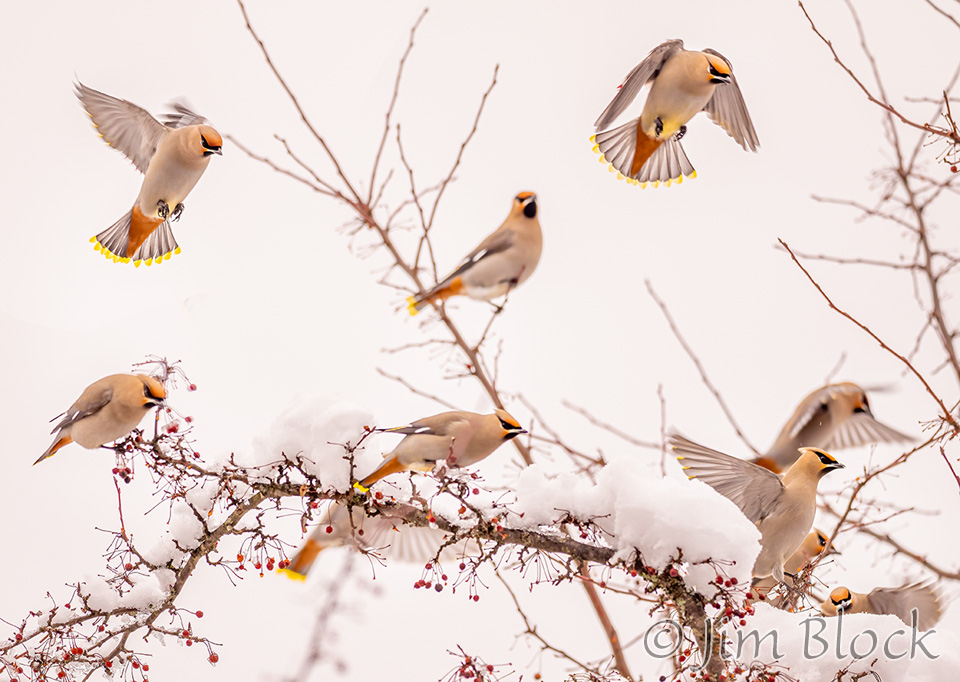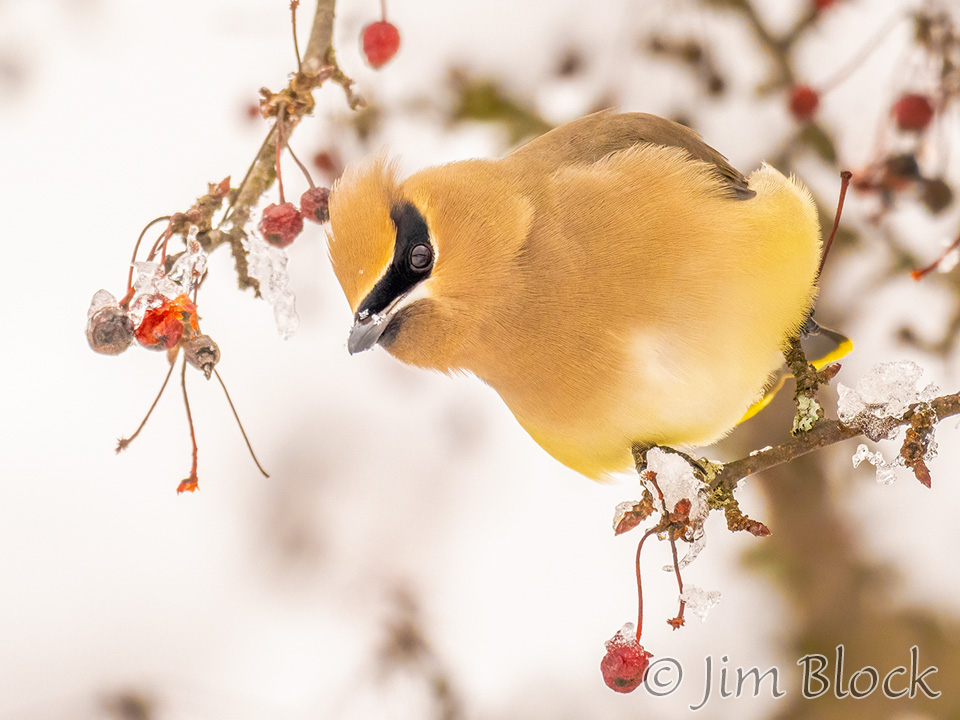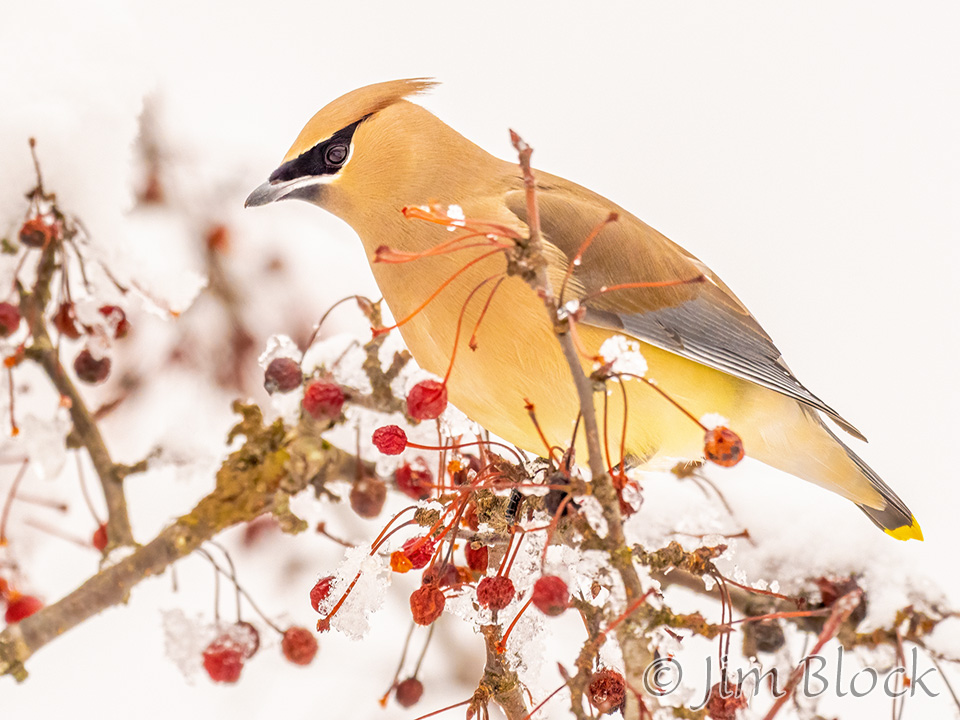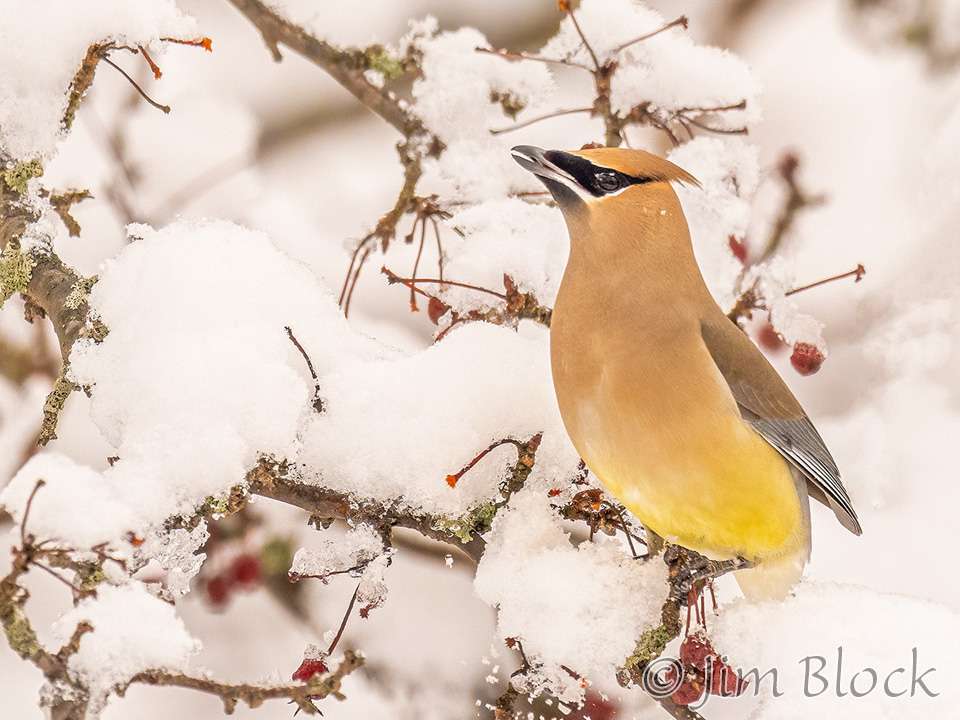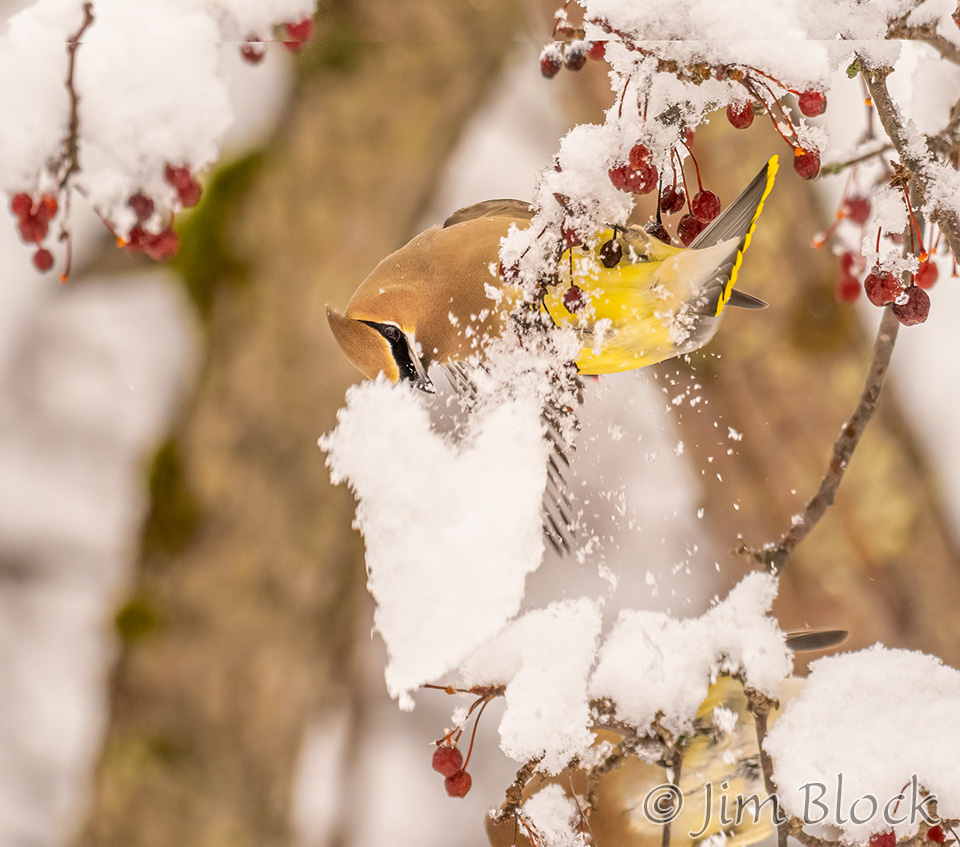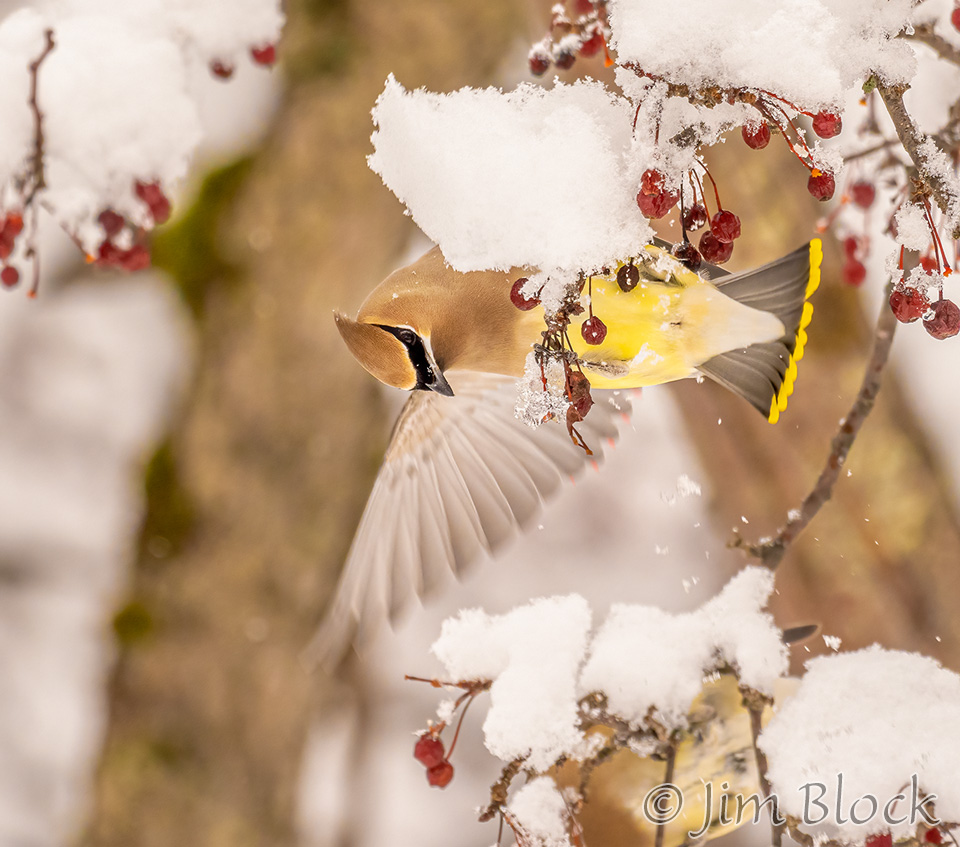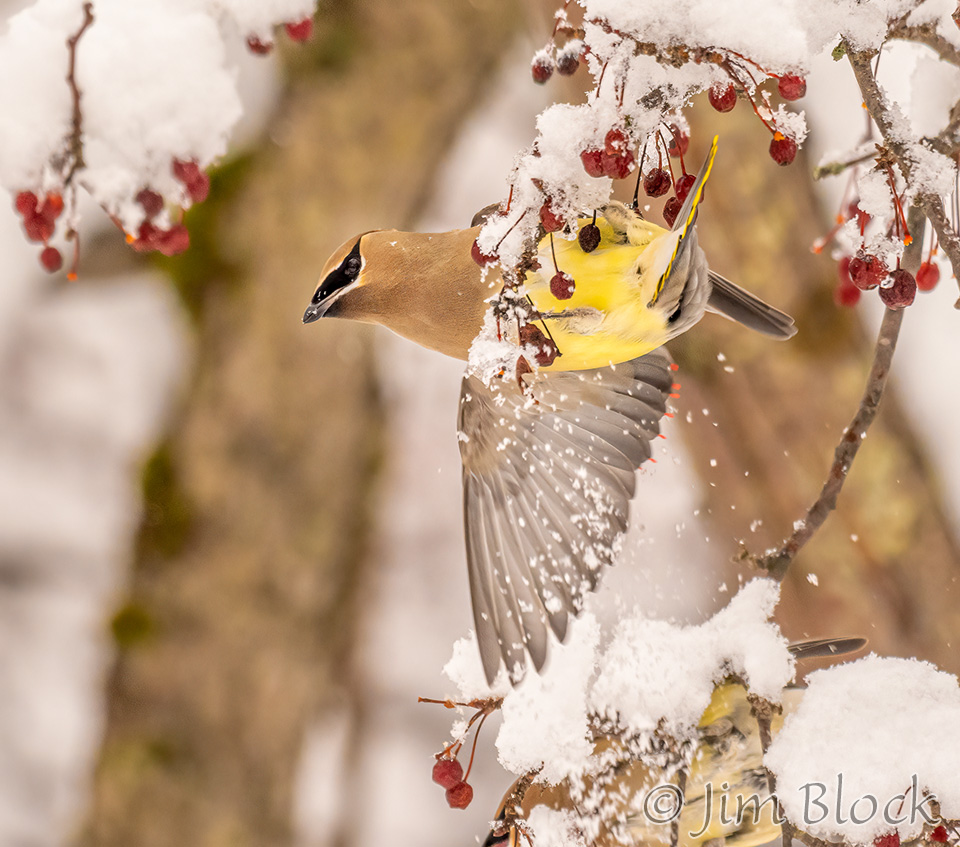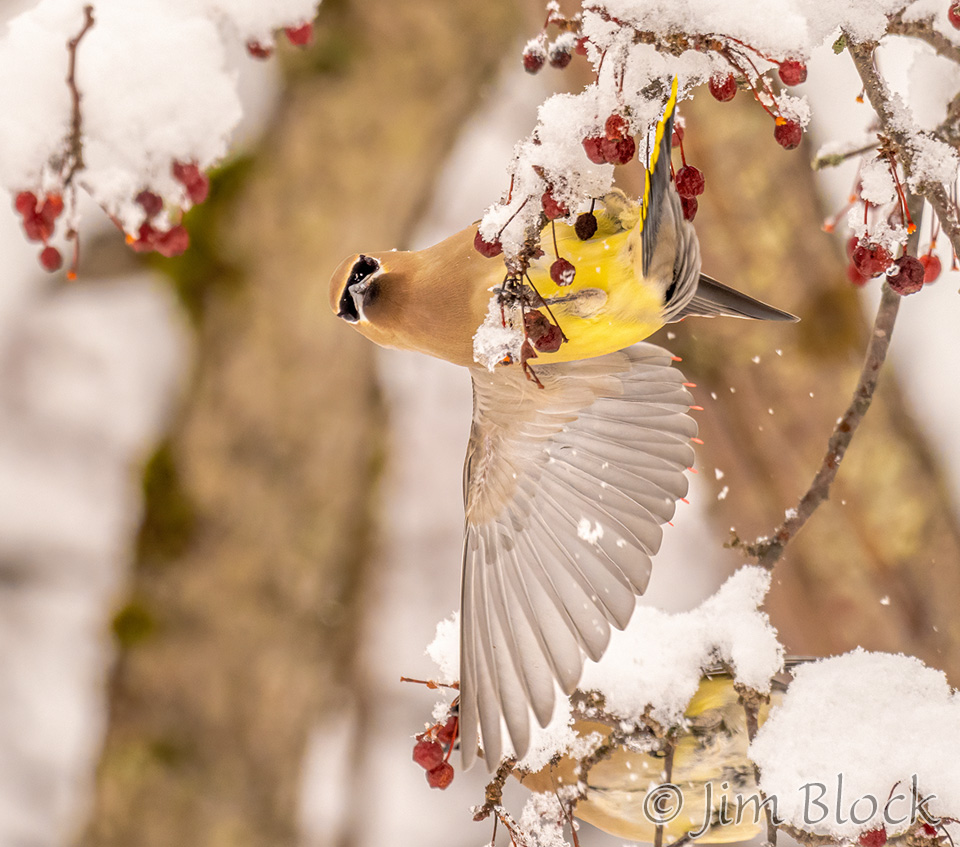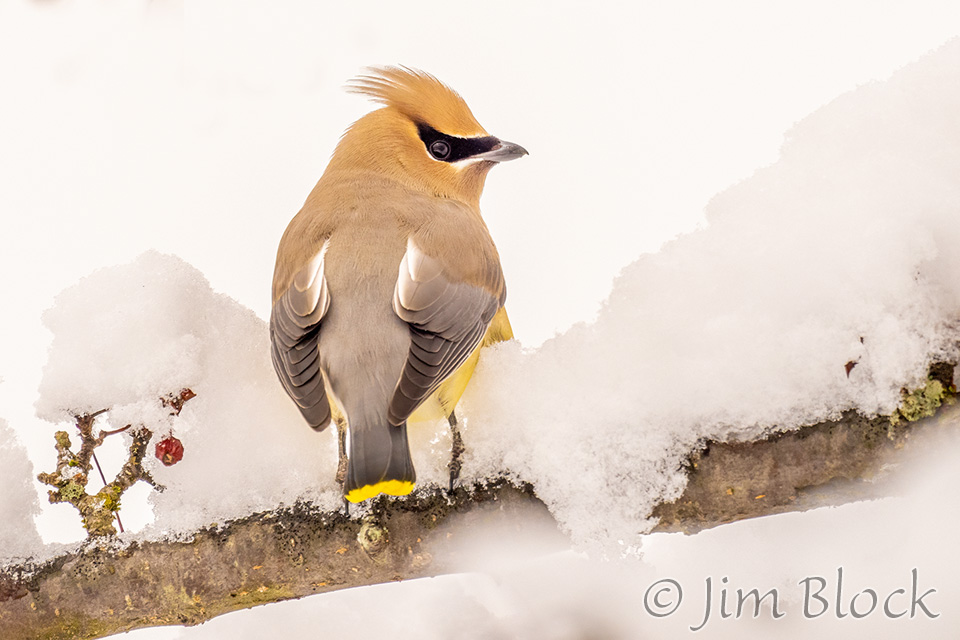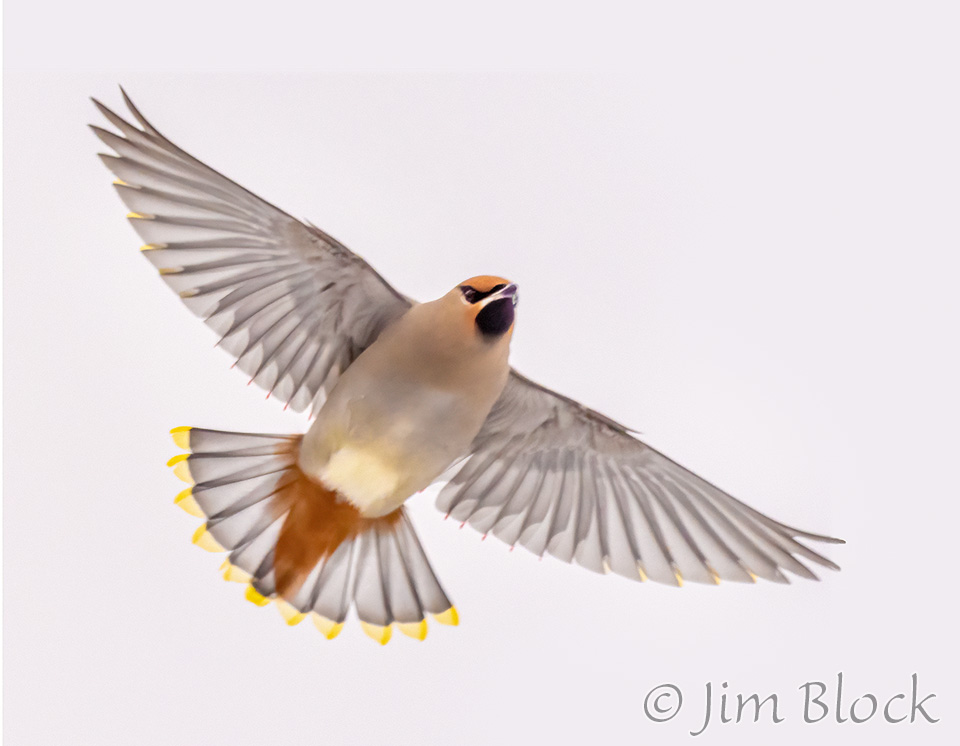
Norwich, VT
I visited the waxwing flock in Norwich on three consecutive days. During the first day it snowed almost constantly, creating challenging conditions for photography but nice “atmospherics”. On all three days the flock would sit high in trees along Route 5 above a group of crabapples for 15 to 20 minutes, then they would often fly around for 5 minutes or so. They would very occasionally land on the crabapple shrubs, feed madly for 10-15 seconds, then depart with a noisy rush of beating wings. They stopped feeding after only a short time whether or not anyone was near the shrubs where they landed. I’m sure glad I was shooting digital and not film. It took many photos to get a few sharp ones.
Here is an iPhone photo of the flock over the crabapple shrubs and the Norwich Farmers Market. You are welcome to do a count if you wish; I just did a ballpark estimate.
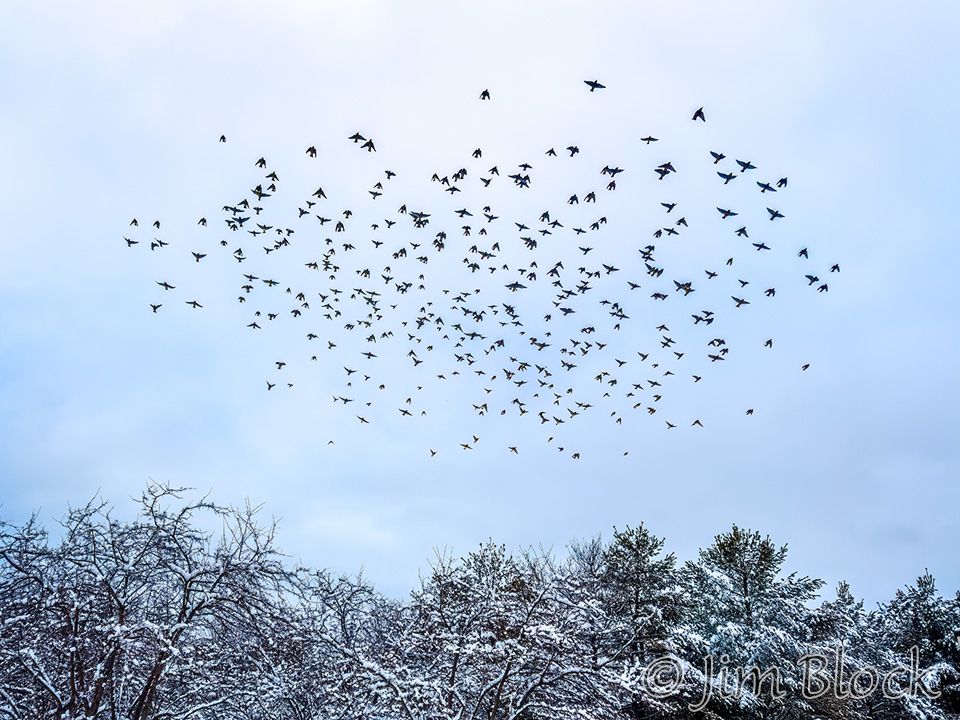
I managed to get some photos of the Bohemians flying using a longer lens than my phone camera.
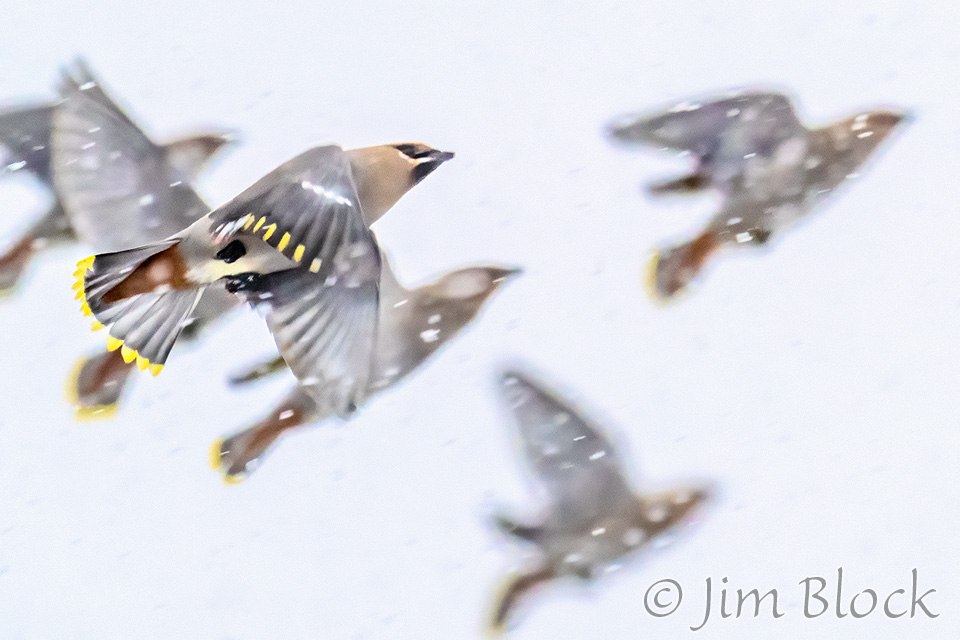
I believe a few birds in the two photos of the flock below are Cedars, with white rather then rufous undertail coverts, though it is hard to tell with the snow falling.

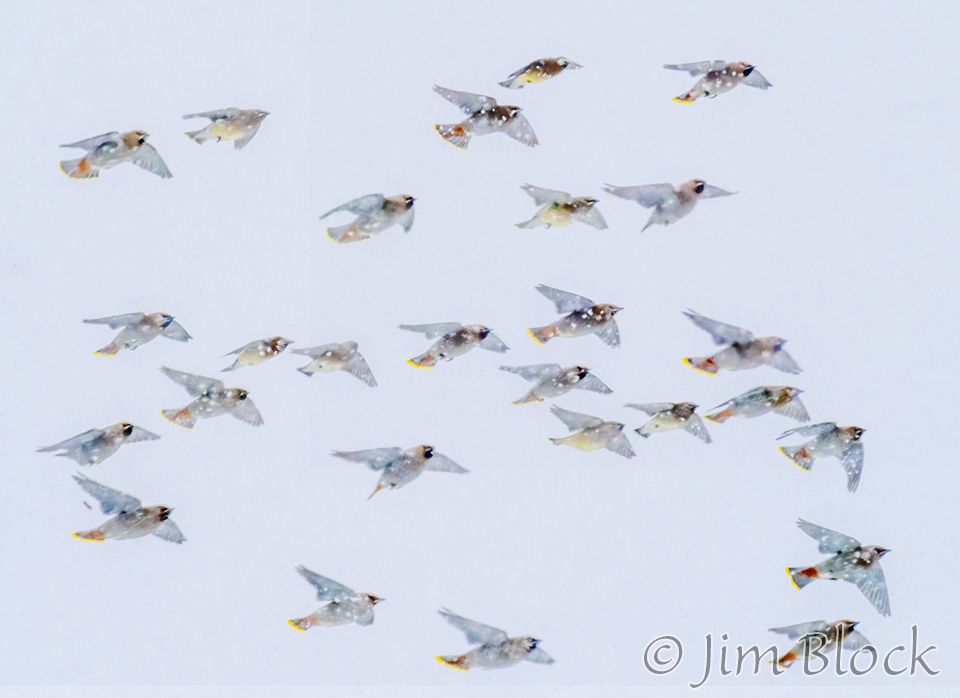
The next day I was able to get a much clearer photo of part of the flock that includes five Bohemians and one Cedar on the lower right. Cedar Waxwings can be seen in the Upper Valley all year. Bohemian Waxwings migrate from the north in very large numbers in the winter every few years. When they do, it is called an irruption.
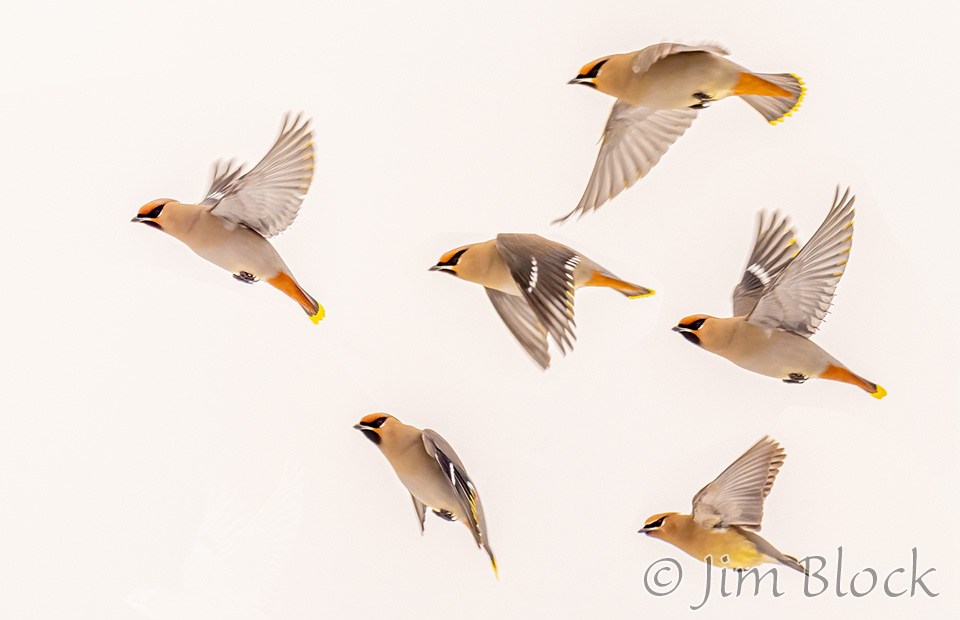
Photographing the birds during the brief time they landed to feed was a real challenge in the snow. Here are a few to perhaps convey what it was like.
I took these two photos when the snow let up for a short time my first day.
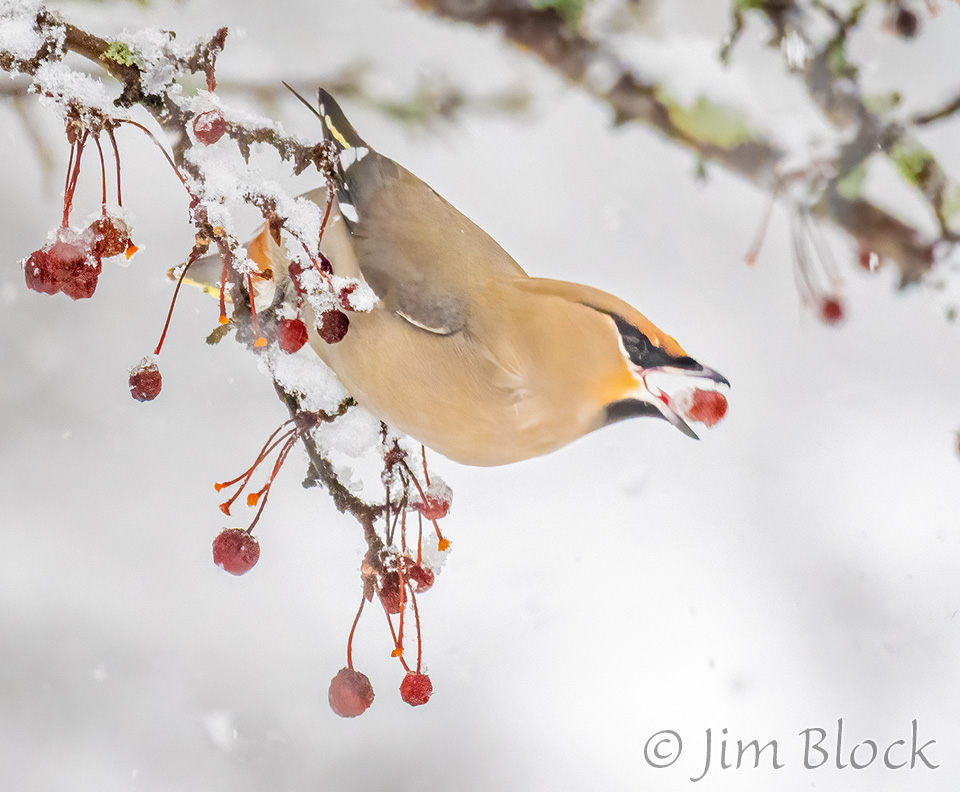
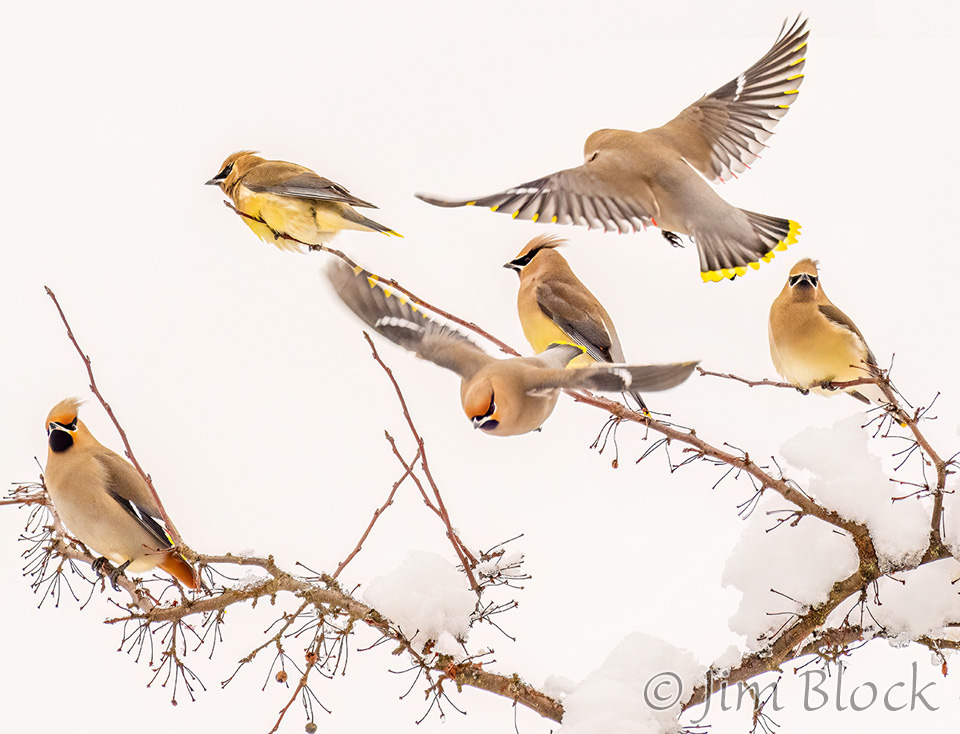
My next two visits were less snowy, but just as exciting and challenging. Again, the waxwings would sit high in trees for a long time, fly around seemingly aimlessly for 5 minutes, land and feed for a few seconds, then repeat. Here are some of the Bohemian Waxwings I photographed during my second visit.
For the last part of my third visit I switched to a somewhat shorter lens to get more birds in each photo. I was pleased when a group of Bohemians briefly perched high on a crabapple shrub before dropping down to feed.
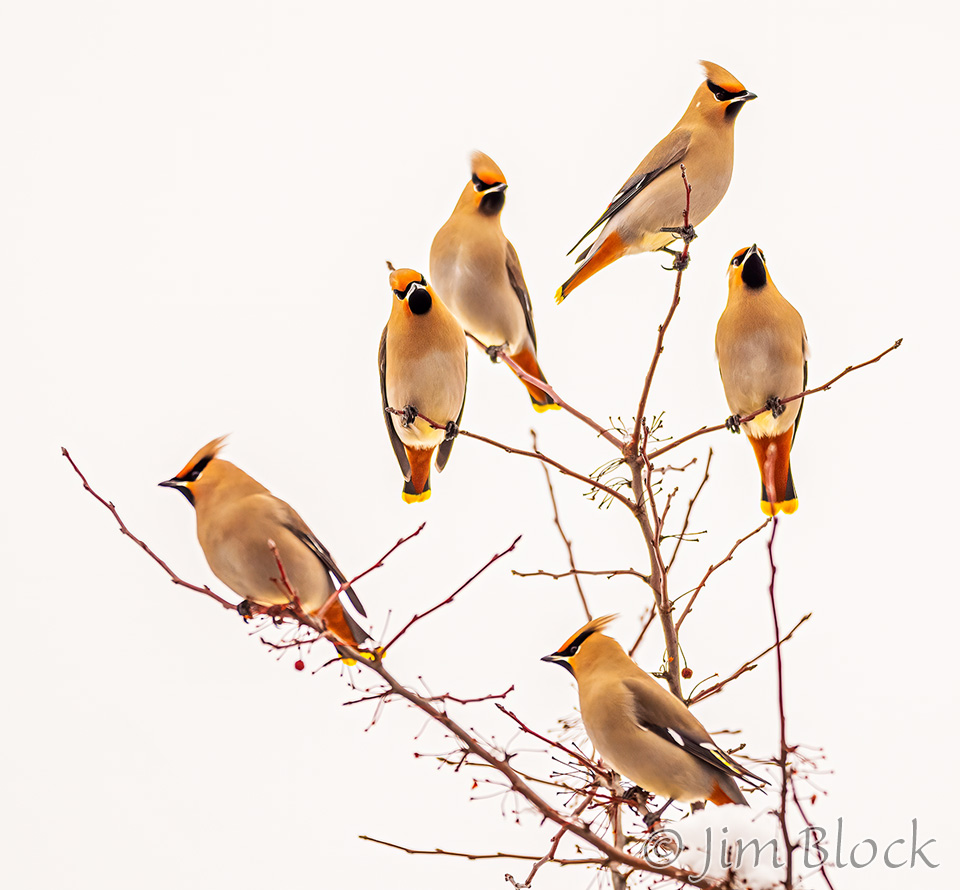
Here are some more Bohemian Waxwings from that later set of images.
Earlier during my third visit, I took this photo of a Bohemian Waxwing.
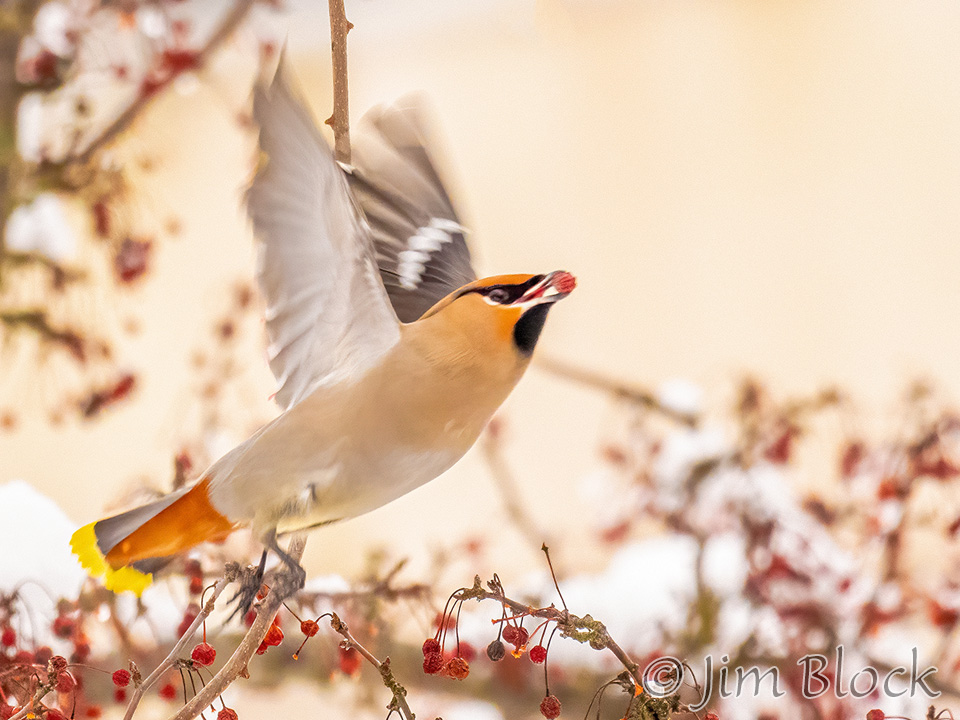
Cedar Waxwings certainly made their presence known as well. Here are ten photos from my three visits to Norwich.
Also present were American Robins. They seemed to mostly perch in their our set of trees away from the waxwings. This robin certainly looks healthy.
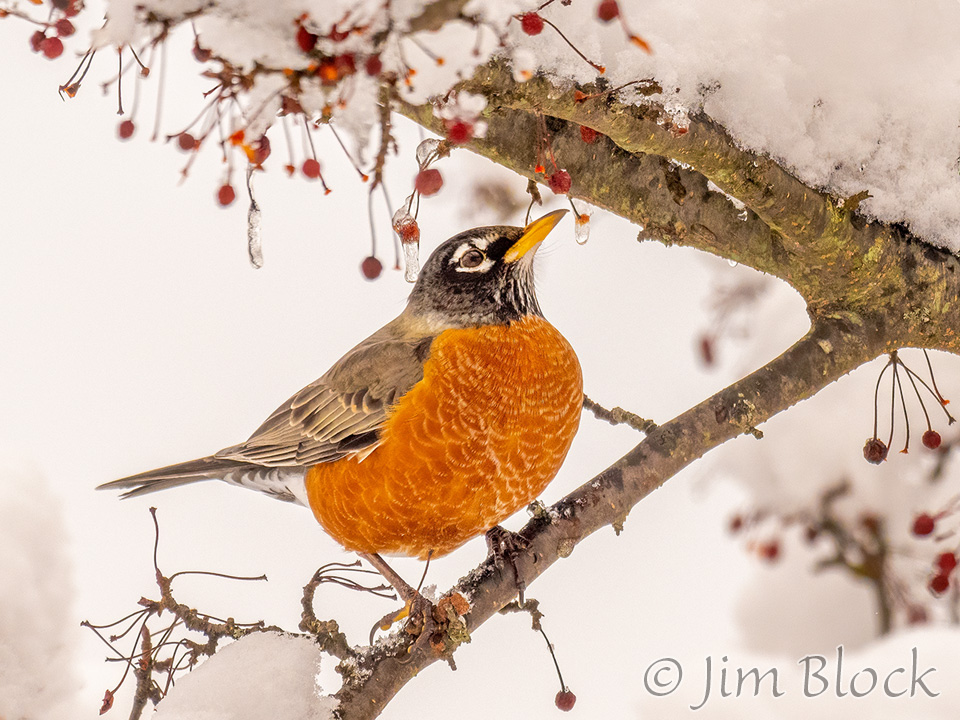
European Starlings, a beautiful introduced species, were also mostly keeping separate from the flock of waxwings.
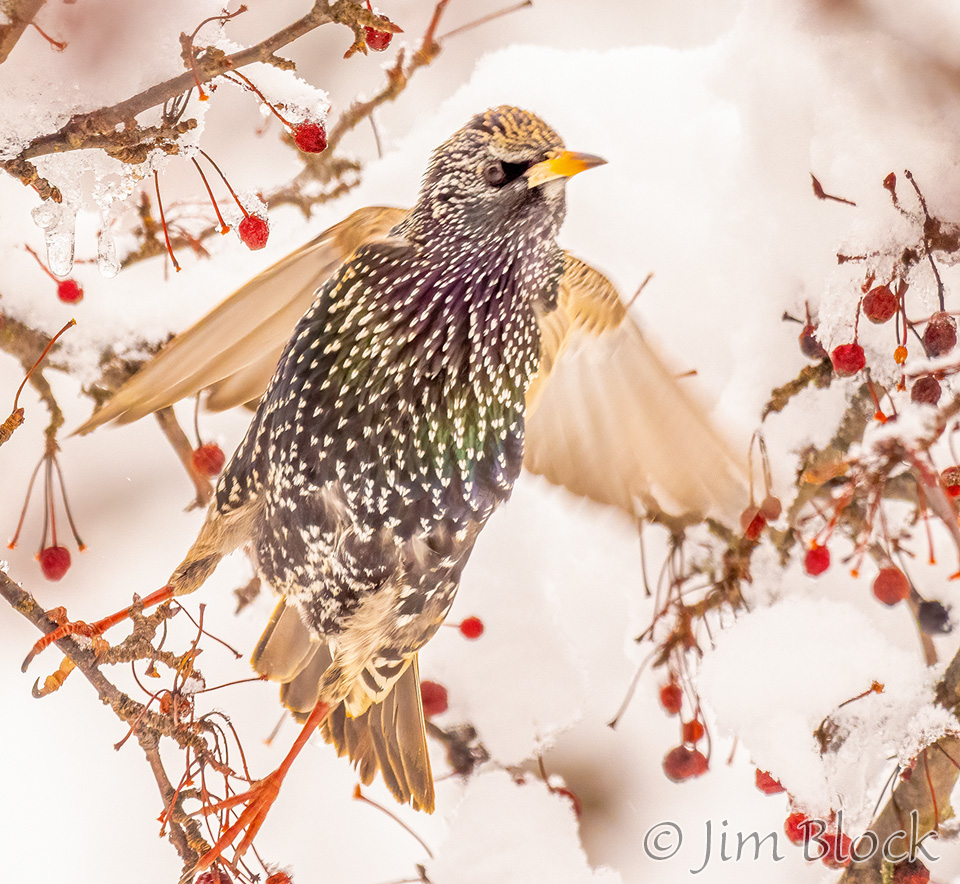
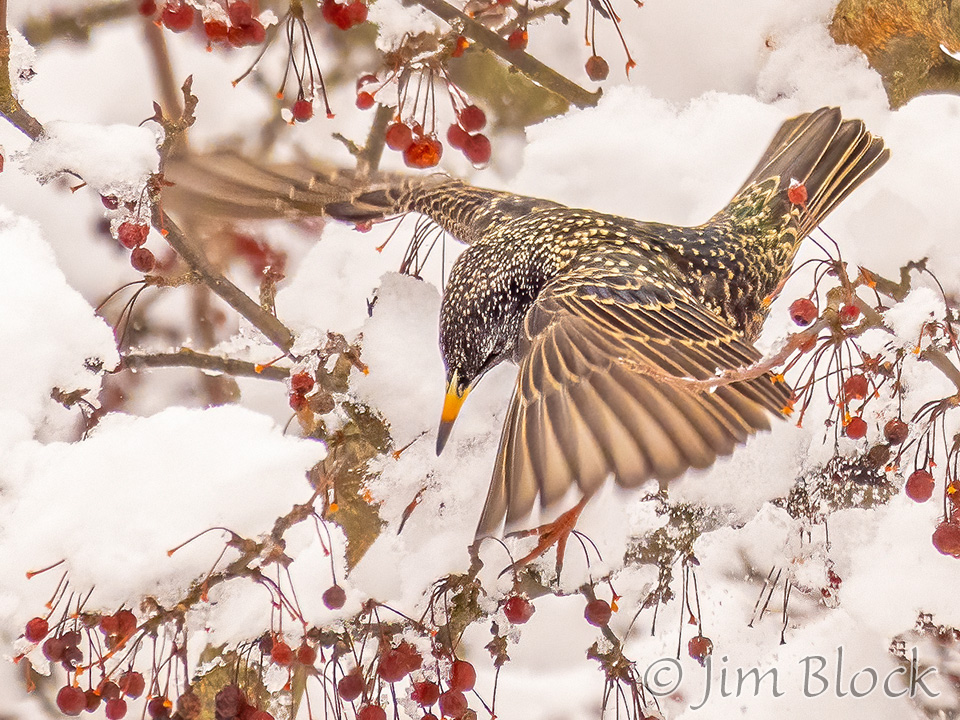
When I drove away the third day, I finally noticed the red-brown splotches all over my car. Waxwing poop.
Canaan, NH
I traveled to Canaan to photograph a flock of Snow Buntings that were reported to be in soccer fields at the Mascoma High School. I scanned the fields but to no avail. Then just before leaving I drove to the very end of the parking lot. Suddenly, quite far away, a flock of Snow Buntings were flushed by a large bird. They flew over my car and disappeared to the south.
As I was leaving that parking lot I saw the bird fly and land on a lamp pole. I lowered my window, moved my car into a closer position, and got this photo of a beautiful Red-tailed Hawk.
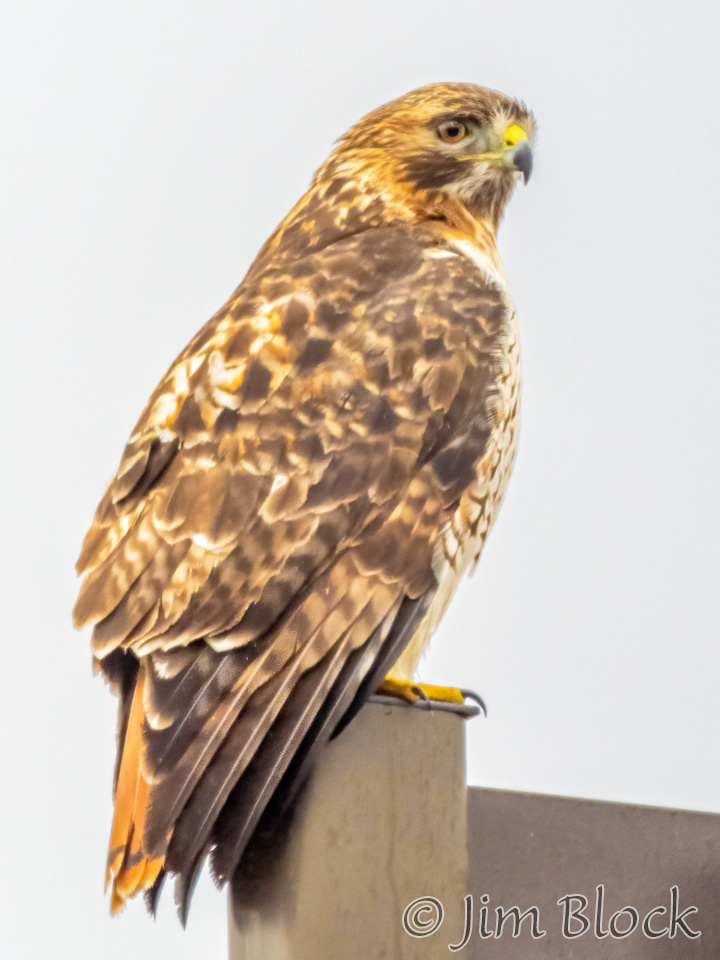
I knew if I got out of the car it would fly, but it flew anyway soon after I got the shot above.
It landed on another lamp pole and we repeated the dance.
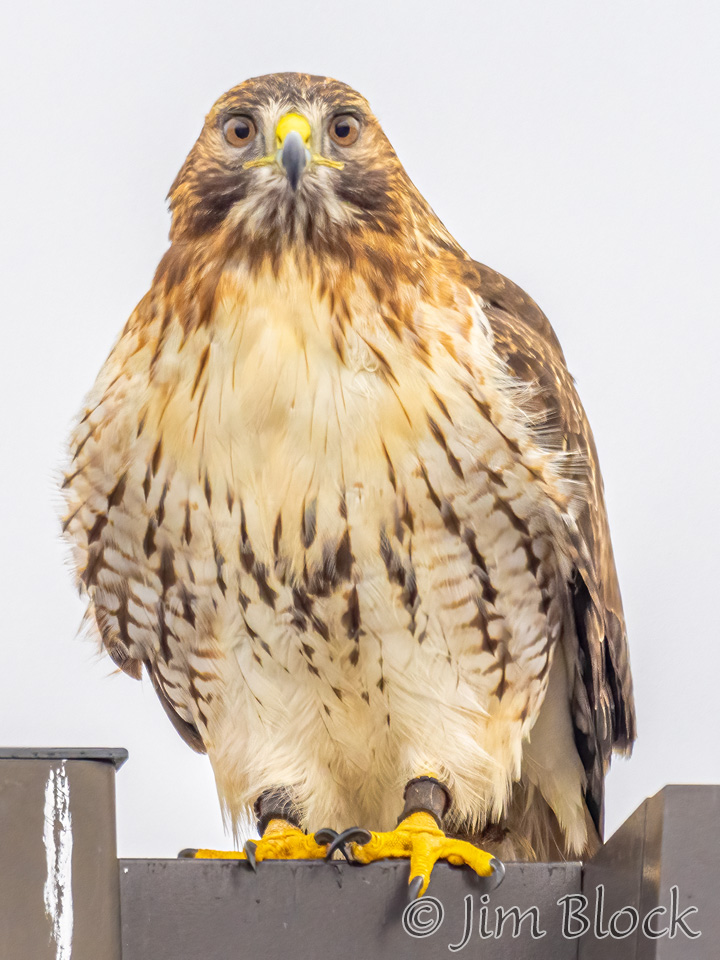
And then it flew to a third pole before it headed across Route 4.
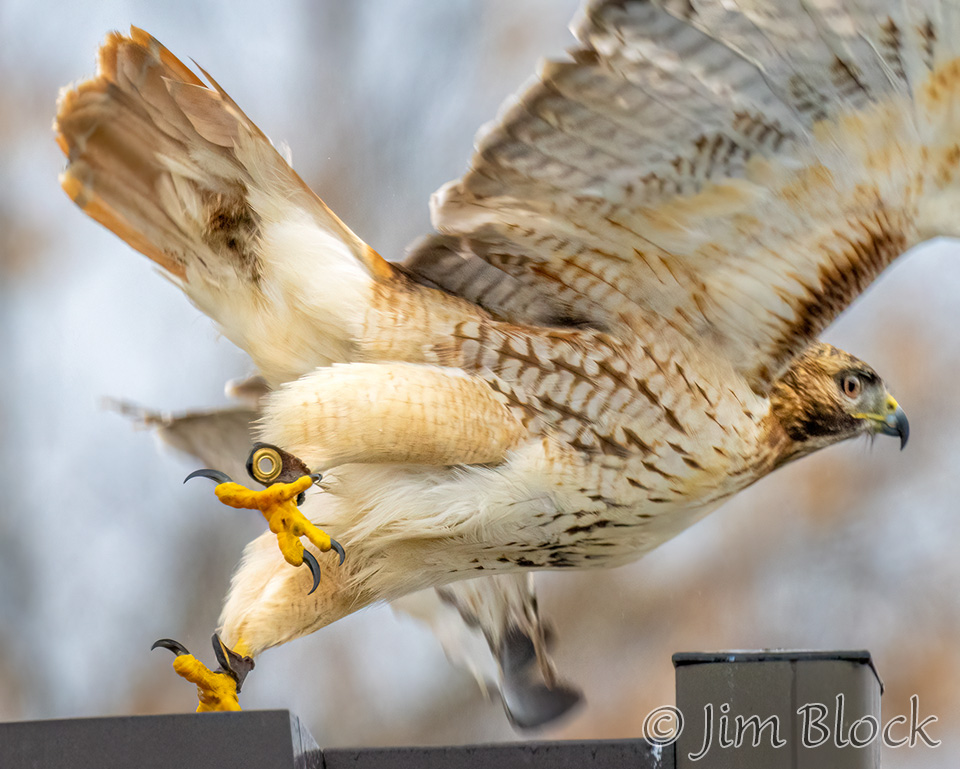
I did not notice until I looked at the photos on my large monitor at home that the hawk was wearing jesses. A jess is a thin strap, traditionally made from leather, used to tether a hawk or falcon in falconry. This bird had been trapped and used for falconry before it escaped.
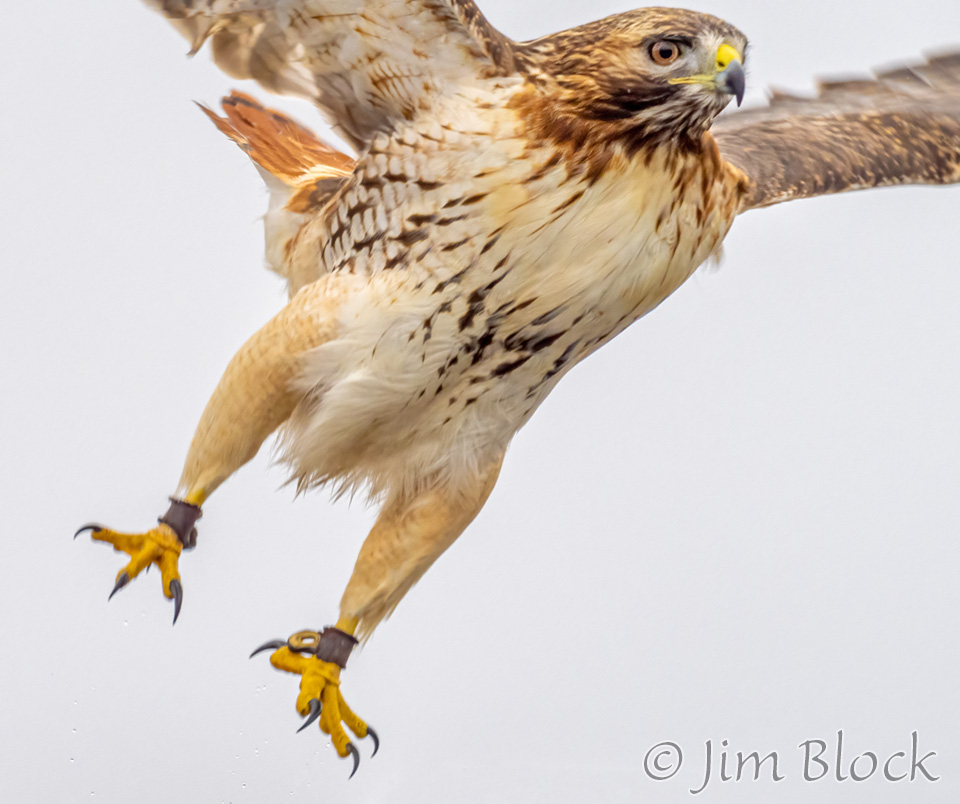
I sent a few photos to Chris Martin of the NH Audubon, and he forwarded them to several others for help. Dave Merker found the falconer who then sent me an email. He said in part,
“the bird you photographed with anklets is Bean, a RT my son (falconer since 2017) trapped at Pease in Newington on November 21st, 2021. Bean took off Christmas day, was spotted on a rabbit by our falconer friends last July, and now we again have proof of life! Yay! We recognized the anklets (made by my son) immediately, and Bean still has the same unmistakable markings though he has molted into a beauty of an adult.”
It turns out I had also photographed this same hawk in Enfield last year but never noticed the jesses. It was standing on a power line which I cropped out of the photo before publishing it on my “fall birds” blog. Here is a final photo of the hawk from near Mascoma HS. I hope it will remain forever free.
